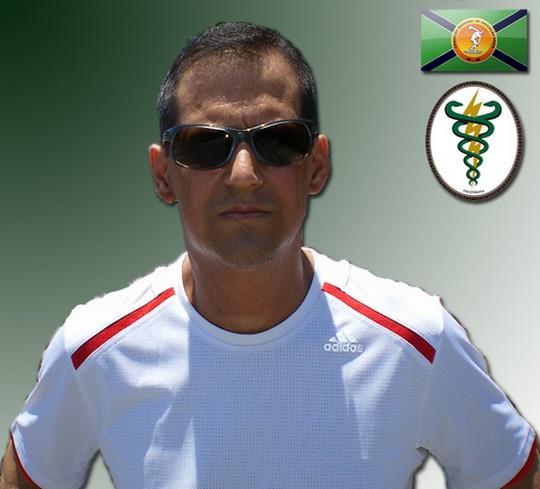Resumo
ntrodução: A autonomia funcional é considerada como um marcador importante à aptidão física, qualidade de vida e saúde do idoso. Objetivo: Comparar a autonomia funcional entre idosas fisicamente ativas e sedentárias. Metodologia: Estudo causal comparativo com amostra constituída por 276 voluntárias: Grupo Fisicamente Ativo (GFA; n=201) e Grupo Sedentário (GS; n=75), que respectivamente se subdividiram em dois subgrupos de acordo com a faixa etária. O instrumento utilizado para avaliação funcional foi o Sênior Fitness Test. A comparação da autonomia funcional inter-subgrupos foi realizada pelo teste U de Mann-whitney como nível de significância (p<0,05) através do programa BioEstat 5.0. Resultados: Diferença significativa entre a autonomia funcional dos subgrupos GFA sobre os respectivos GS em todos os testes. Conclusões: A prática regular de atividade física levou as idosas fisicamente ativas a ter uma condição melhor que as sedentárias.Referências
Fernandes MGM, Andrade NA, Nóbrega MML. Determinantes de fragilidade no idoso: uma revisão sistemática. Online Brazilian journal of nursing, v. 9, n. 1 (2010).
Ribeiro, RCL et al. Capacidade funcional e qualidade de vida de idosos. Estud. interdiscip. envelhec., Porto Alegre, v. 4, p. 85-96, 2002.
Pereira, FD et al. Comparação da força funcional de membros inferiores e superiores entre idosas fisicamente ativas e sedentárias. Rev. Bras. Geriatr. Gerontol 2009, vol.12, n.3.
Fleg JL, et al. Accelerated longitudinal decline of aerobic capacity in healthy older adults. Circulation. 2005; 112: 674-82.
World Health Organization – WHO. Draft global strategy on diet, physical activity and health – integrated prevention of noncommunicable diseases. Geneva. 2003; 3-18.
Hollmann W, Strüder HK, Tagarakis CV, King G. Physical activity and the elderly. Eur J Cardiovasc Prev Rehabil. 2007;14(6):730-9.
Rikli RE, Jones CJ. Fitness of older adults. The Journal Active Aging. 2002; 25-30.
American College Of Sports Medicine. Position stand: the recommended quantity and quality of exercise for developing and maintaining cardiorespiratory and muscular fitness, and flexibility in healthy adults. Med. Sci. Sports Exercise. 1998; 30: 975-91.
Capodaglio P, et al. Muscle function and functional ability improves more in community-dwelling older women with a mixed-strength training programme. Age and ageing. 2005; 34(2):141-7.
Chaves C, Rodrigues L, Garganta R. Effects of a Once-a-week Exercise Programme in the Elderly. 13th annual congress of the European College of Sport Science 9-12 july 2008; Estoril - Portugal. 28.
Yamauchi T, et al. Effect of home-based well-rounded exercise in community-dwelling older adults. Journal of Sports Science and Medicine. 2005; (4): 563-7.
Furtado HL, et al. Perfil de resistência cardiorrespiratória em mulheres idosas com sobrepeso do programa de atividade física no SESC de Nova Friburgo/RJ/Brasil. Revista de Desporto e Saúde da Fundação Técnica e Científica do Desporto. 2008; 4(11): 21-26.
Faria VAM, Oliveira AMB. Yogilates: physical conditioning, strengh and flexibility on sedentary elderly women. VI Encontro Latino Americano de Pós-Graduação – Universidade do Vale do Paraíba. 2007; 2768-72.
Hallage T. Efeitos de 12 semanas de treinamento com dança aeróbica e step de baixo impacto sobre a aptidão funcional de mulheres idosas. Dissertação. Mestrado em Educação Física da Universidade Federal do Paraná, 2008; p40.
Alves RV, et al. Aptidão física relacionada à saúde de idosos: influência da hidroginástica. Rev Bras Med Esporte 2004; 10(1): 31-7.

